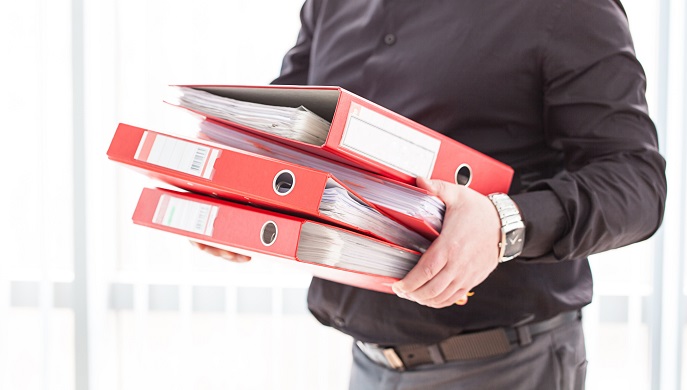Sofema Aviation Services www.sassofia.com takes an Overview of Best Practice Technical Records Management Processes.
Brief Introduction to EASA Regulatory Requirement Concerning Correctness of Entries
The regulations concerning the correction of Aircraft Technical Records are very straightforward and leads to no miss understanding, however, it is still necessary to develop the information, to ensure that different scenarios of documentation anomalies can be addressed within the organisation’s technical procedures document. (see examples below)
Regulatory Background
M.A.305 Aircraft continuing airworthiness record system
Regulation (EU) 2015/1536
(g) All entries made in the aircraft continuing airworthiness records shall be clear and accurate. When it is necessary to correct an entry, the correction shall be made in a manner that clearly shows the original entry.
UK CAA – CAP 562 – Book 2 Leaflet 5-70 Aircraft, Engine and Propeller Log Books
6 The Upkeep of Log Books
6.1 Permanent legibility is the keynote. Handwritten entries must be made in ink or indelible pencil. Any document kept in or with the logbook should be either securely attached or kept in an attached pocket but should not prevent reference to the page to which it is attached.
6.2 Initiation of a continuation logbook is the responsibility of the user and he should transfer sufficient data for continuity and should number the logbooks consecutively.
6.3 Each completed column of figures should be totalled and carried forward.
6.4 Any error should be corrected but remain legible. The corrections should be signed.
In a machine system errors discovered after the data has been inserted into the memory should be corrected by a new entry not an erasure and the correct entry annotated as a correction with an authorisation code.
Best Practice Considerations
In light of the above, it is necessary to develop organisational procedures which ensure the following:
a) Legibility – All information MUST be clear and understandable
b) Contain an “Audit Trail” – Means all information is appropriately related and controlled
c) Any Errors discovered are identified as such without obliterating or defacing the information – specific reference to the correct information with audit trail & authority
d) CRS Certifications may only be made by authorised staff – if a missing CRS is found it must be addressed immediately through Maintenance Control and Quality Assurance
Case Study – Do Not Underestimate the Importance of the Technical Records Role
On preparing to send the log card to stores for NLG Retraction Jack, the engineer noticed that the last overhaul date on the log card was 24/9/08, more than 6 years ago.
The overhaul EASA Form One is dated 25/9/08, verifying the log card. The part has a 12000 cycle /6-year overhaul life, meaning the next overhaul was due in September 2014.
The Retraction Jack was removed from the aircraft in February 2015, and the overhaul, therefore, went overdue by approximately 5 months.
The ’cause’ would appear to be the overhaul of the retraction jack being incorrectly claimed on the maintenance database from the date of the first fit, 1st April 2009, rather than the date of overhaul. This would have led planning to work on the assumption that the overhaul was due by 31st March 2015, as forecast.
In 2004, the NTSB accident report of the Charlotte USAir Express Accident (AAR-04-01) stated that the FAA should: “…require 14 CFR Part 121 air carriers to implement a program in which carriers and aircraft manufacturers review all work card and maintenance manual instructions for critical flight safety systems and ensure the accuracy and usability of these instructions so that they are appropriate to the level of training of the mechanics performing the work…”
In 2007, a report by the Confidential Human Factors Incident Reporting Programme (CHIRP) from the United Kingdom (www.chirp-mems.co.uk) indicated the top two most frequently occurring errors reported were:
(1) information not used and
(2) procedures not followed.
Mitigation Measures
A procedure has been introduced for all critical components to be checked by a second member of the technical records department post fitment.
This procedure should discover any errors like that made in this case, in time to rectify them before a maintenance activity is due.
Therefore this is unlikely to reoccur for any critical components fitted since the procedure was introduced.
Examples of Error to be found
Some Work packages can contain very complicated tasks including Repairs, Modifications, Service Bulletins, Airworthiness Directives, Supplemental Type Certificates (STC’s) and it is important that completeness of the task together with the correct identification of a recurrent requirement is clearly understood and correctly recorded into the system.
Who Can Change Technical Information Within a Work Package?
It depends on what we are changing, for example, if there is an error in a part no or serial no and we have the original EASA Form 1 – clearly this does not require the certifying staff to involve – but we still need to know who has made the change.
An acceptable solution is to authorise technical record staff with the necessary competence by providing them with a personal stamp to “show ownership” (audit trail) of the correction – (paying attention to item “c)” above.
If a task has not been performed correctly due to a misunderstanding by the certifying staff – then it is necessary to immediately raise awareness (maybe the task needs to be issued and to raise an internal report so that the root cause & human factor can be considered).
Sofema Aviation Services www.sassofia.com and SofemaOnline www.sofemaonline.com provide EASA compliant regulatory classroom and vocational training. For more details please see the websites or email office@sassofia.com or online@sassofia.com
Tags:
Aircraft continuing airworthiness record system, Aircraft Technical Records, Correctness of Entries, EASA, Errors




